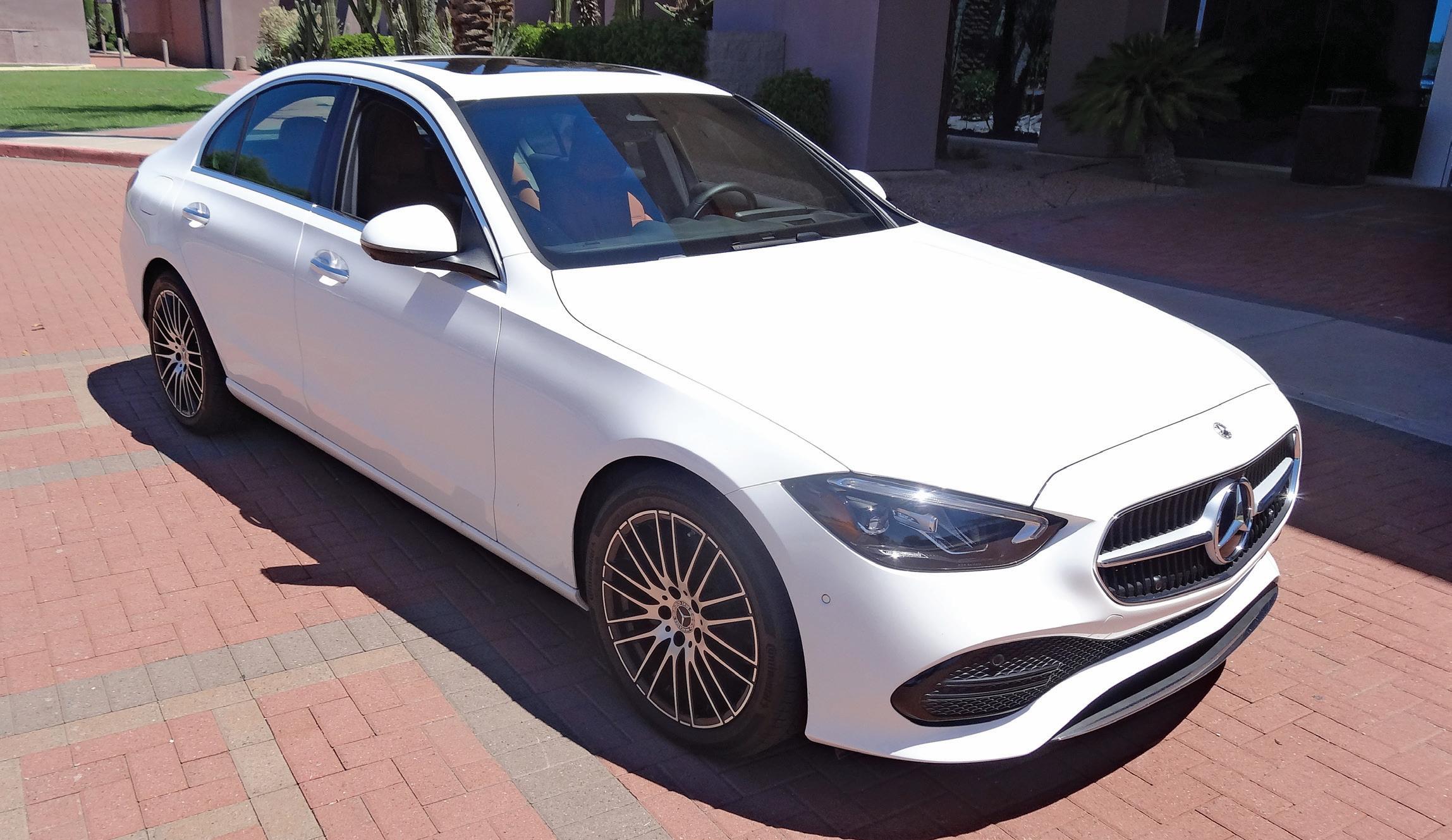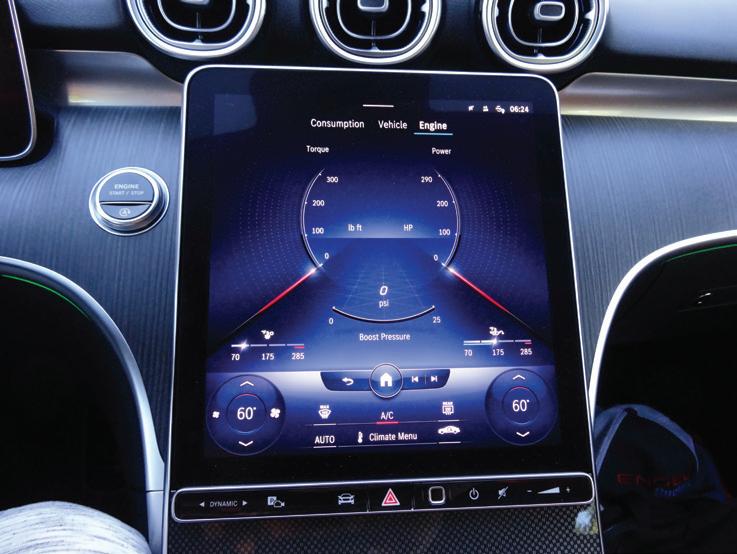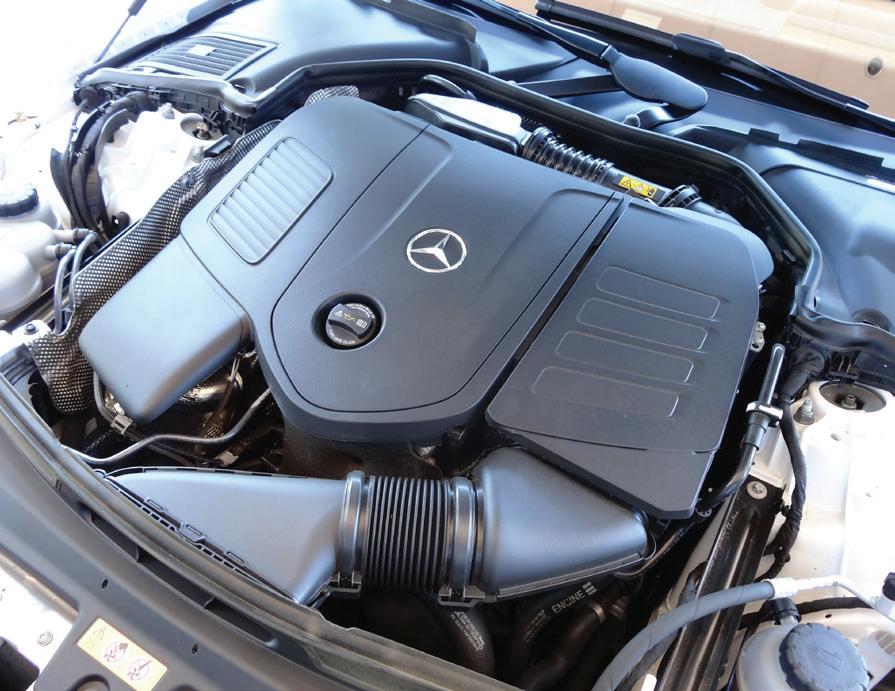
5 minute read
l Problem Solved
The Mercedes Benz C-300 Turbo Sedan is what a proper German sedan should be.
(C.A. Haire/Contributor)
Extraordinary Rides
Mercedes Benz C-300 Turbo Sedan is ‘a very nice ride’
By C.A. Haire
With a starting price of $43,000, the C-300 sedan allows consumers to enter the world of Mercedes ownership without breaking the bank. Naturally, there are always options to bump the tab.
Our vehicle added illuminated door panels, SiriusXM radio, upgraded cabin lights, navigation, phone charger, upgraded stereo and wide-view camera unit. This brought the total to an even $49,000.
For this money, the factory has given a total redo of the cabin, and it looks fantastic. The quality of materials and workmanship are first class, with great smell of highgrade leather trim all around. A large info screen is easy to use, and that optional high-quality camera system offers a wide outside view. In fact, the overall design looks almost identical to the top Mercedes S-Class ($100,000) model.
Under the hood is a small, 2.0-liter, fourcylinder motor, with turbocharging and hybrid electric assist. The total output is 255 horsepower, and attached is a sharp ninespeed automatic transmission. A computer control inside the cabin allows for Eco, Sport, Comfort or Individual drive modes. Fuel economy is claimed to be 23/35 mpg.
We put about 400 miles on the clock. This sedan is quick, handles like a champ, has strong brakes and is a smooth ride. In other words, it’s what a proper German sedan should be. On highway trips we observed an easy 36 mpg.
The only gripe we had was with the controls. There are just too many, a bit of overkill, and it takes a lot of time and effort to learn them all. But by the fifth day, we had them all figured out. If you are leasing this for 36 months, you will have more than enough time to do so. You will also have a very nice ride.

A large info screen is easy to use. Under the hood is a small, 2.0-liter, four-cylinder motor. (C.A. Haire/Contributor)




Problem
Solved
By Christopher Elliott
Lyft charged $150 for cigarette burns, but I don’t smoke
After LeeAnn Hicks takes a Lyft ride, the company broadsides her with a $150 charge for cigarette burns. But she says she didn’t cause the damage. Does she still have to pay? Question: After a recent ride in a Lyft ride-share, the company charged me a $150 damage fee for an alleged cigarette burn to the vehicle. I have sent numerous emails to Lyft informing them that I did not cause the damage.
I asked Lyft for the driver’s statement and evidence that led them to conclude that I caused the damage, but I never got an answer. A Lyft representative claims the company has reviewed the damage charges.
“As per checking the report made by your driver, it appeared that an investigation has been conducted and found that the claim was valid,” Lyft said. “With that having said, please know that no adjustment will be made to this claim.”
I do not smoke. Can you help me get my $150 back, please?



—LeeAnn Hicks
Answer: Lyft should not charge you for damage to one of its cars unless it has hard evidence. And there should be a system to handle any dispute arising from a damage claim.
I reviewed the photos of the alleged damage sent to Lyft by Timothy, your driver. Th ey appear to show a small cigarette burn in the side of the passenger seat. But they are low-resolution images. Th e metadata, which would show the location and type of camera used, appears to have been removed. Th at makes it impossible to tell if this is Timothy’s car or if you had been the passenger.
And that’s not the only thing that doesn’t make sense. If you burn a cigarette in Timothy’s car seat, that means you smoked in the vehicle. If that happened, I’m sure Timothy would have pulled over and asked you to extinguish your cigarette. But I don’t see any accompanying incident report that claims you smoked in the car. What’s more, you told me that you’ve never smoked. A Lyft representative admitted in writing that the driver only provided “anecdotal evidence of the situation.” Th at made me a little suspicious about this claim.
Lyft charges passengers anywhere from $20 for minor damage such as mud, dirt or animal fur in the car to $150 for “major” damage like biowaste all over the car or physical damage to fi xtures inside or outside of the car. But it requires that drivers report the damage within two hours and take at least two photos of the damage. It isn’t clear to me if Timothy followed all of the rules.
Even if he did, there should have been some way for you to dispute the charge. But according to the email thread between you and Lyft, the company dismissed your appeal and insisted that you pay. You blocked Lyft from charging your card (smart move) and then contacted me.
You could have taken this to an executive at Lyft. I list the names, numbers and email addresses of the Lyft executives on my consumer advocacy site, elliott.org.
Lyft should not be able to arbitrarily charge $150 to your credit card without giving you a chance to review the evidence and respond. If a driver ever alerts you to damage, make sure you take pictures. Make note of the condition of the vehicle and be prepared to defend yourself against any charges. Th e system Lyft has in place appears to heavily favor its drivers and fails to give passengers their due process. It can do better.
I contacted Lyft on your behalf.
“After a thorough investigation into the claim, we found that the description of the events did not warrant enough proof that the passenger created the damage, so we elected to refund the damage fee,” a Lyft spokeswoman told me.
Christopher Elliott is the chief advocacy offi cer for Elliott Advocacy. Email him at chris@elliott.org or get help with any consumer problem by contacting him at elliott.org/help.







